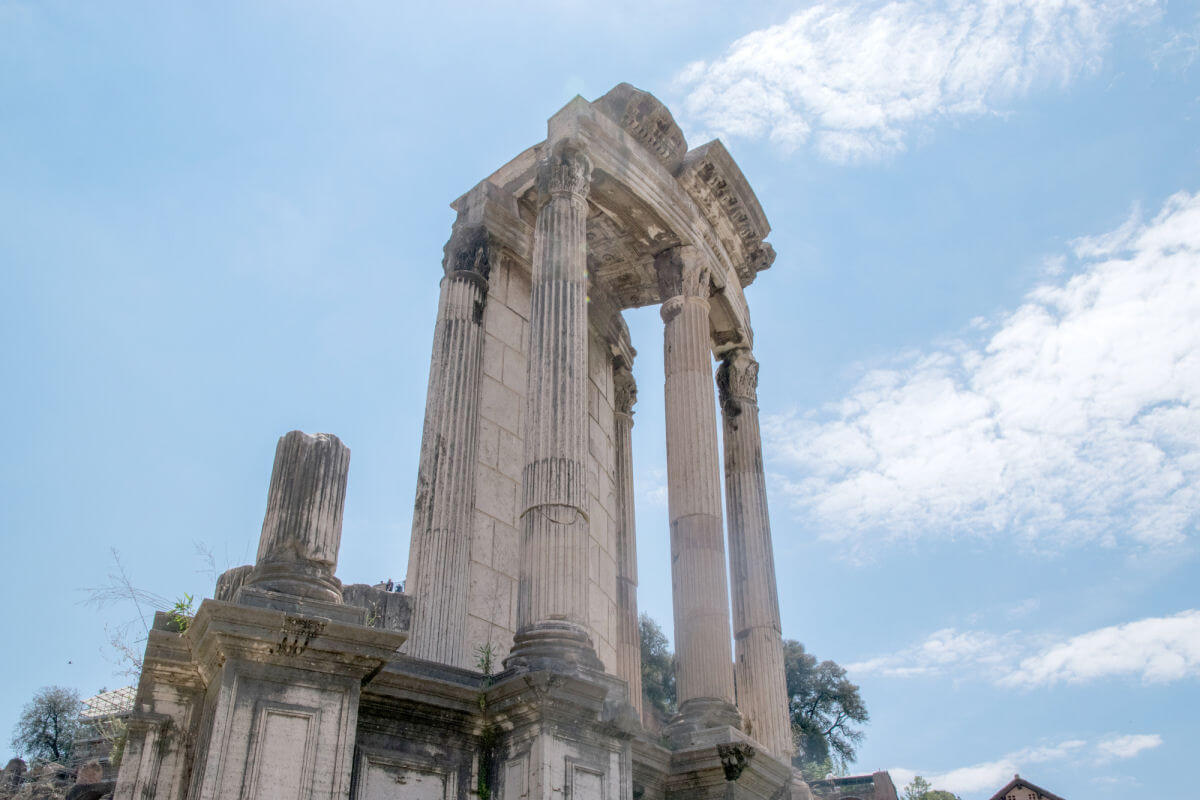The Vestal Virgins
The priestesses of the goddess Vesta were known as the Vestal Virgins. They were responsible for maintaining the sacred fire within the Temple of Vesta in the Forum Romanum.
Other duties included performing rituals in regards to the Goddess Vesta, and baking the sacred salt cake to be used at numerous ceremonies in the year.
They were the only female priests within the roman religious system. The head of the college of Vesta was called the Virgo Vestalis Maxima, and she was under the direct authority of the Pontifex Maximus.

The ruins of the Temple of Vesta in the Roman Forum, where the sacred flame burned
The college of Vesta had 18 members, though 6 were considered actual Vestal Virgins at any given time. They were selected from distinguished patrician families at an age from three to ten, and such appointments were considered a top honor for any family to receive.
They each served thirty years, the first ten years as novices, then ten years as actual vestal virgins, and finally ten years as supervisors responsible for training the novices.
After the thirty years of duty they were released from their duties and could then maintain a private life, including the right to marry. For men, arranging a marriage with a former vestal virgin was highly prestigious, regardless of age or the ability to have children.
The vestals vowed to live in chastity for the thirty years their tenure lasted. In return, they were allowed many privileges not given to ordinary Roman women.
As one example, the vestals were not subject to the pater potestas of their fathers. Essentially they were allowed to handle their own properties and engage in legal contracts, they were allowed to travel around the city in a carriage, and they had special seats in the front row at the various games, where, in contrast, women were normally relegated to the back seats.
They were considered inviolable and sacred, and their blood could not be spilt without fear of terrible repercussion from the gods. So sacred and divine-like were these priestesses, that if a person sentenced to death met a vestal virgin on his way to the execution, he would be automatically pardoned. Of course, special care would be taken to prevent or to make sure this would happen, depending on the circumstances.
While enjoying many benefits, including a rather luxurious life in the House of Vestal Virgins, punishment for breaking the rules were severe. The punishment for breaking the vow of chastity was death by being buried alive, so as to kill a vestal without shedding her blood.
Such executions would take place in the "Evil Fields", or Campus Sceleratus, just outside the Servian Wall. Their lover would be flogged to death on the Comitium (the original open-air public meeting space of ancient Rome).
While these executions took place several times, it was obviously a rare event that carried all sorts of negative omens with it.
Although the Pontifex Maximus continues to the present day as an office of the higher order in the Catholic Church, the order of the vestals was disbanded in 394 AD when non-Christian cults, such as the Cult of Mithras, were banned by Theodosius.
The Church, wisely trying to keep the general population with a sense of familiarity, readily adopted the use of convents and position of nuns that held many of the same rules and customs as the Vestals.
Did you know...
The Temple of Vesta contained a number of objects the Romans believed were particuarly precious: the Palladium (a statue of Athena rescued from Troy by Aeneas), two statues of the Penates of the Roman people (protectors of the Roman household), and ashes (of unborn calves sacrificed on the Fordicidia which were mixed with the blood of a victorious horse from chariot races in honor of Jove).



